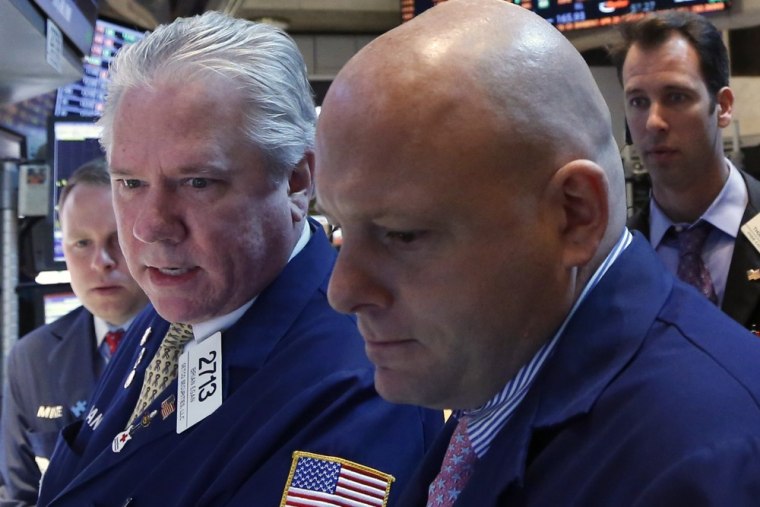
One bogus tweet about blasts at the White House was all it took Tuesday in a market already on edge after the attack in Boston. After that, panic and the machines took over, sending stocks into a brief but shocking tailspin.
By the close of trading, stocks ended 152 points higher. It was the 15th consecutive Tuesday that the Dow Jones industrial average ended higher, something the index hasn't done since Calvin Coolidge occupied the White House.
But that wasn't the tale of the day. That took place at 1:07 p.m. ET, when a fake tweet from The Associated Press about explosions at the White House injuring President Barack Obama slashed more than 140 points from the Dow. The CBOE Volatility Index — the market's so-called fear gauge — shot higher by 7 percent shortly after the false tweet.
Less than five minutes later, the Dow turned higher again, but not before the whole even rattled Wall Street, Main Street and the media.
At a news conference shortly after the bogus post, White House Press Secretary Jay Carney said, "the President is fine."
The impact on the market was intense. On the floor at the Chicago Mercantile Exchange, dealers quickly traded on the tweet, selling S&P futures and buying Treasury 10-year futures. For several minutes, the floor was a flurry of activity, as it was in trading rooms across Wall Street, until The Associated Press tweeted that its account had been hacked.
"That's a bogus tweet," an AP spokesperson initially told NBC News, a statement that was repeated by the company's corporate communications account. "That's all I have for you right now." Though the initial tweet disappeared, the false message continued to exist on Twitter in over four thousand retweets.
"You wonder who did it and whether it was done on purpose. It certainly was an instant implosion," said Art Cashin, of UBS, who watched the minutes of bedlam on the floor of the NYSE. Cashin said the reaction was especially dramatic because it said the president was injured.
"That goes to show you how algorithms read headlines and create these automatic orders – you don't even have time to react as a human being," said Kenny Polcari of O'Neill Securities. "I'd imagine the SEC's going to look into how this happened. It's not about banning computers, but it's about protection and securing our markets."
Reuters reported that a spokesman for the Securities and Exchange Commission declined to comment.
Tuesday had been the best day of the week for the blue-chip this year with an average return of 0.46 percent. If the index closes in the black today, it will have been up for the 15th consecutive Tuesday. The last time the Dow rose for 15 straight Tuesdays was in 1927. The index rose 27.7 percent in that year.
CNBC's PattiDomm, JeeYeon Park and NBC News' Rosa Golijan andPatrick Rizzocontributed to this report.